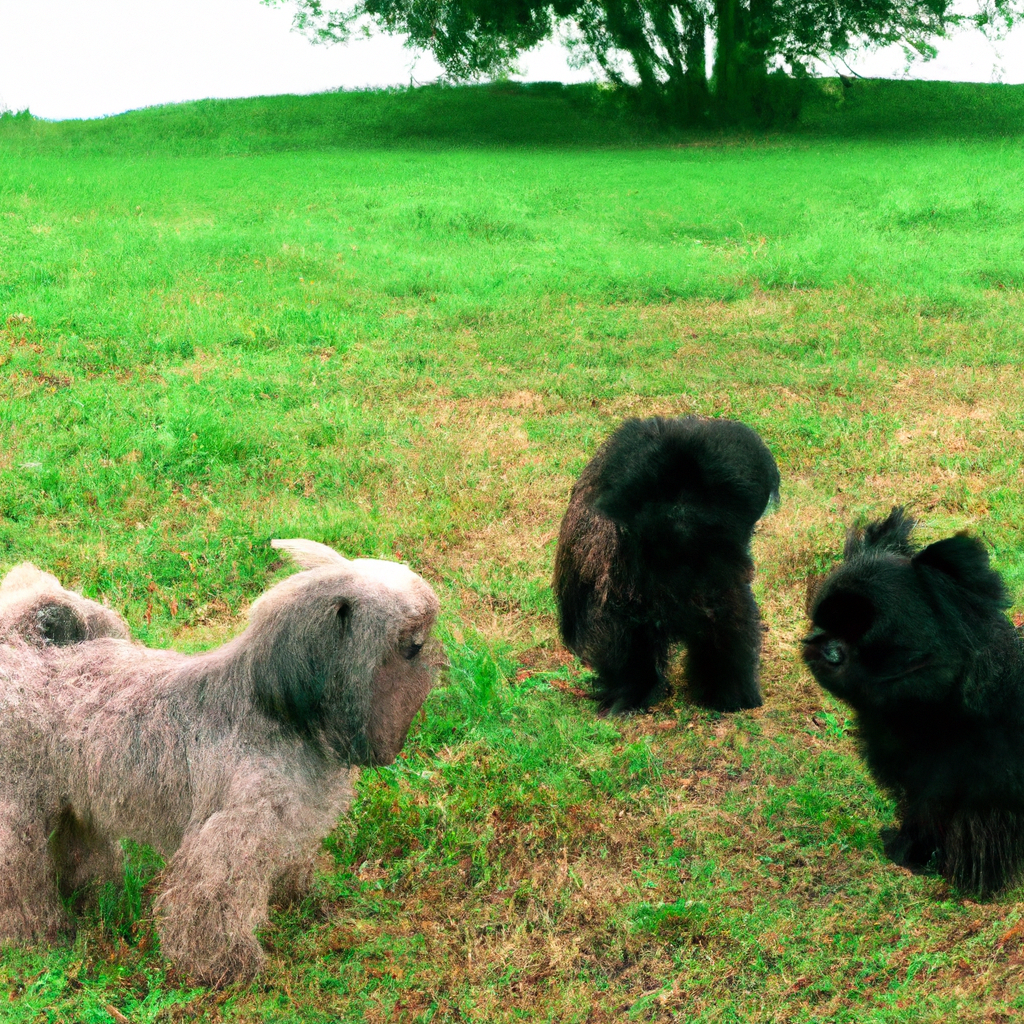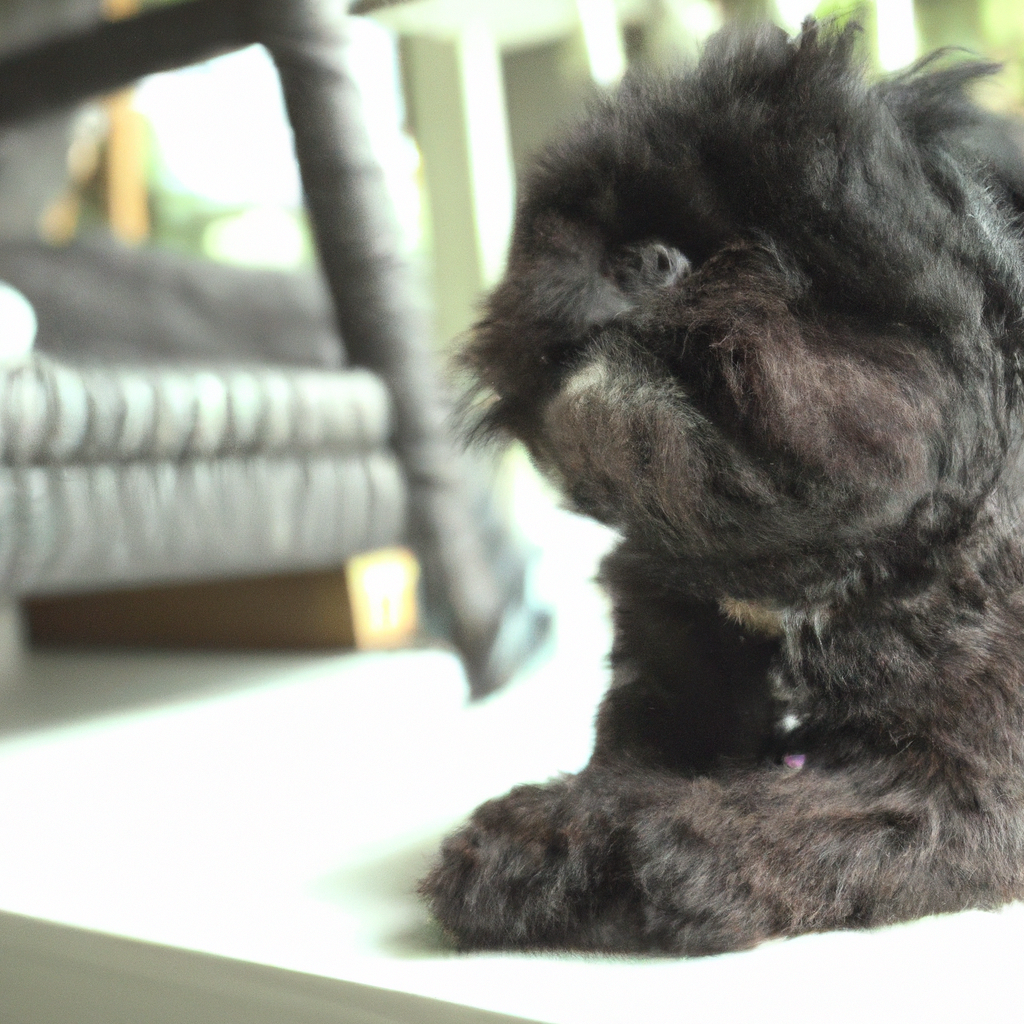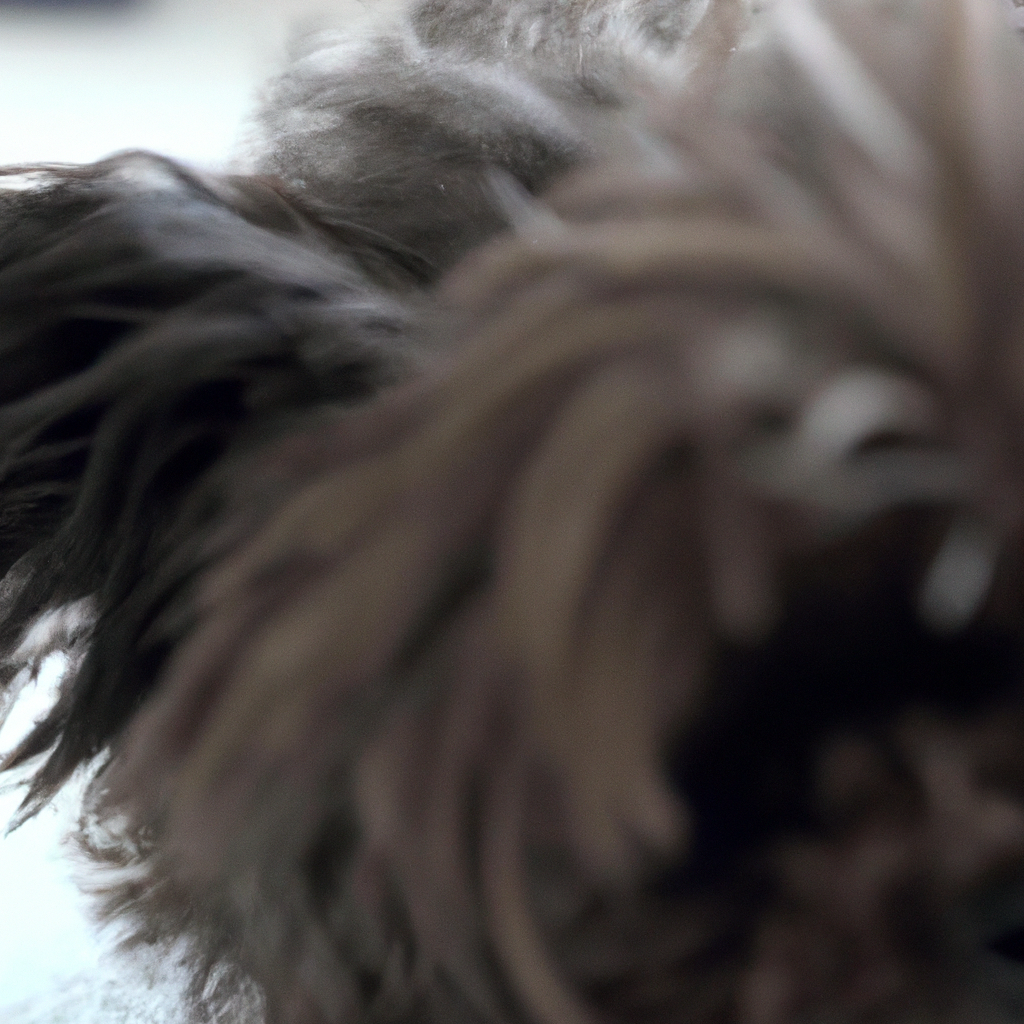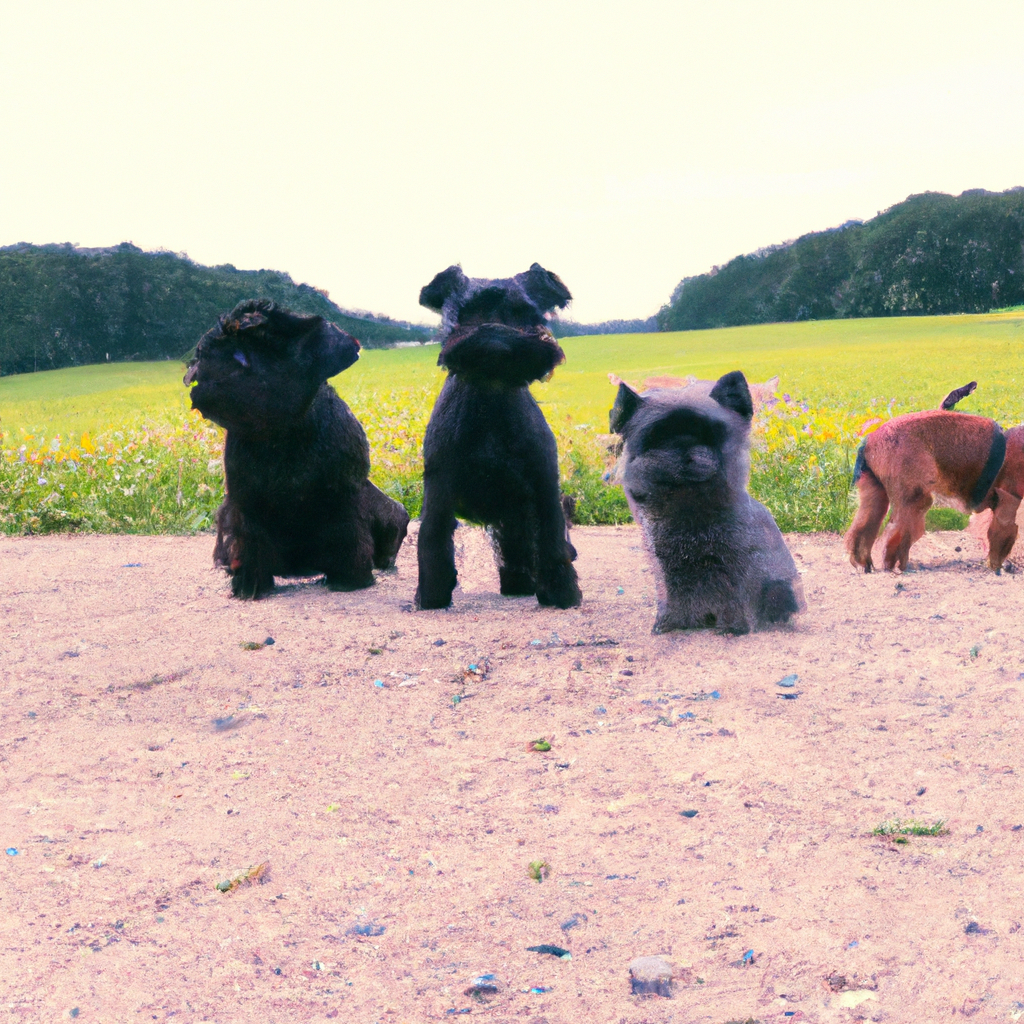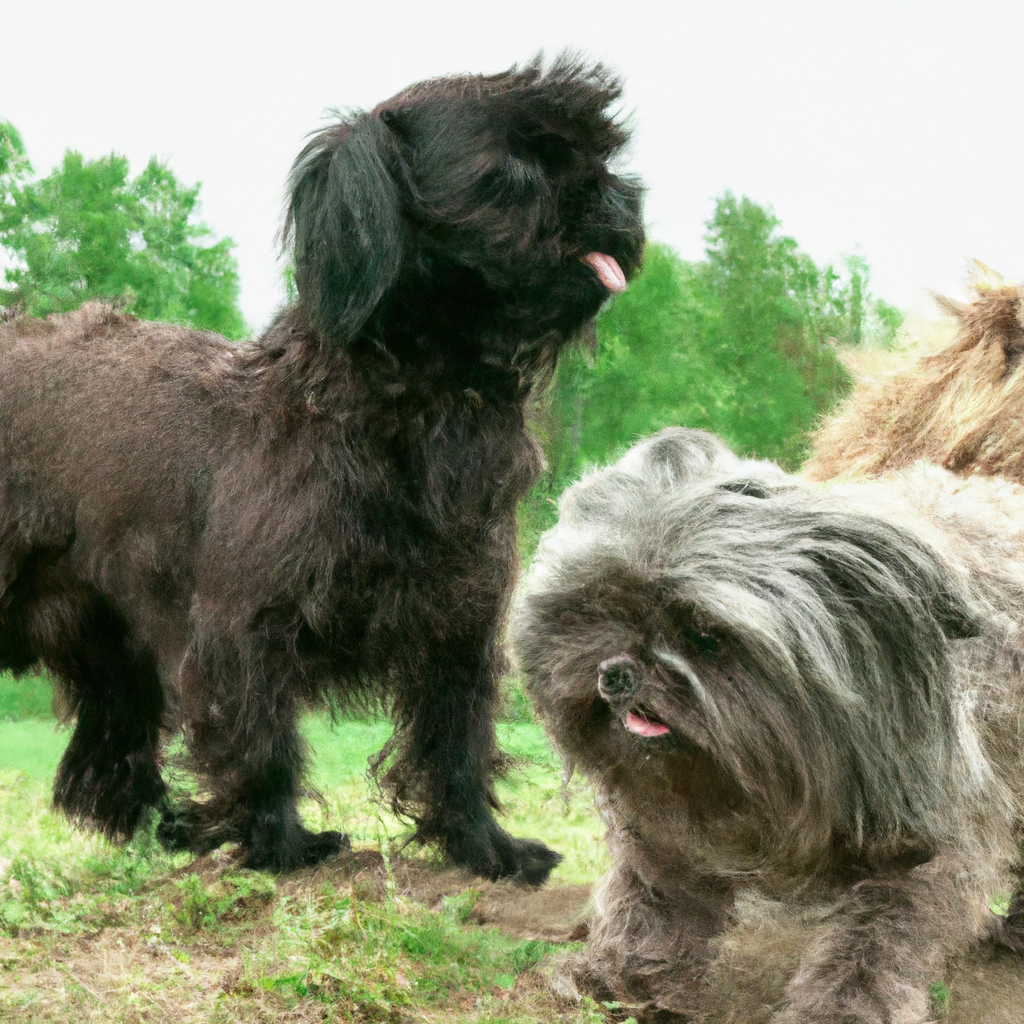The Affenpinscher, also known as the “Monkey Terrier”, is a toy breed that is distinct from other toy breeds in terms of training requirements and techniques. This breed is known for its intelligence, curiosity, and stubbornness, which can make training a unique challenge. Unlike other toy breeds that may be more docile or eager to please, the Affenpinscher requires a consistent, patient, and creative training approach. The breed’s independent nature and high energy levels contrast with other toy breeds, necessitating a more engaging and varied training regimen. Comparatively, other toy breeds may not require as much mental stimulation during training or may respond better to different training methods. Understanding these differences is crucial for effective training and fostering a positive relationship between the owner and the Affenpinscher.
Comparing Training Techniques: Affenpinscher and Other Toy Breeds
Training your new puppy can be an exciting yet challenging endeavor. The process can be even more complex when you consider the differences in training techniques required for different breeds. In this article, we will delve into the training differences between the Affenpinscher and other toy breeds.
The Affenpinscher, also known as the “Monkey Terrier,” is a small but feisty breed. They are known for their distinctive appearance and their lively, adventurous spirit. This breed is intelligent and can be quite stubborn, which can make training a bit of a challenge. However, with the right approach, training an Affenpinscher can be a rewarding experience.
Unlike other toy breeds, Affenpinschers require a firm and consistent training approach. They respond well to positive reinforcement techniques, such as treats and praise. However, they can be quite stubborn and may require a bit more patience and persistence than other toy breeds. It’s important to establish yourself as the leader early on in the training process to ensure your Affenpinscher understands who’s in charge.
On the other hand, other toy breeds like the Maltese or the Pomeranian are known for their eagerness to please their owners. This trait makes them relatively easier to train. They respond well to positive reinforcement and are generally less stubborn than the Affenpinscher. However, these breeds can be quite sensitive, so it’s important to use a gentle approach when training. Harsh corrections or punishments can cause these breeds to become fearful or anxious.
Another key difference in training techniques lies in socialization. Affenpinschers, with their bold and adventurous spirit, require early and frequent socialization to prevent them from becoming overly protective or aggressive. They need to be exposed to a variety of people, places, and situations to help them become well-rounded dogs.
In contrast, other toy breeds, while still requiring socialization, may not need it as intensely as the Affenpinscher. These breeds are generally more sociable and less likely to display aggressive behaviors. However, they can be prone to separation anxiety, so it’s important to gradually acclimate them to being alone.
When it comes to house training, Affenpinschers can be a bit more challenging than other toy breeds. Their stubborn nature can make this process longer and more difficult. Consistency and patience are key when house training an Affenpinscher.
Other toy breeds, while still requiring consistency, may be easier to house train due to their eagerness to please. However, these breeds can be prone to accidents if they are not taken out frequently enough, so it’s important to establish a regular bathroom schedule.
In conclusion, while there are similarities in training techniques for the Affenpinscher and other toy breeds, there are also significant differences. The Affenpinscher’s stubborn nature requires a firm and consistent approach, while other toy breeds may respond better to a gentler approach. Socialization is crucial for both, but especially so for the Affenpinscher. House training can be more challenging with an Affenpinscher, but with patience and consistency, it can be achieved. Understanding these differences can help you tailor your training approach to your dog’s specific needs, leading to a more successful and enjoyable training experience.
Understanding the Training Differences: Affenpinscher vs Pomeranian
Training your new puppy can be an exciting yet challenging endeavor. The process can be even more complex when you’re dealing with different breeds, as each breed has its unique characteristics and temperaments. This is particularly true when comparing the Affenpinscher, a small but feisty breed, with other toy breeds like the Pomeranian. Understanding the training differences between these two breeds can help you tailor your approach to suit your pet’s specific needs.
Affenpinschers, also known as “Monkey Terriers,” are known for their distinctive appearance and lively personality. They are small but sturdy, with a mischievous streak that can make training a bit of a challenge. However, don’t let their size fool you. Affenpinschers are intelligent and eager to please, which can make them a joy to train if you understand their unique needs.
One of the key differences between Affenpinschers and other toy breeds like the Pomeranian is their independent nature. Affenpinschers are known for their stubbornness and can be a bit more challenging to train than other breeds. They require a firm and consistent hand, with plenty of positive reinforcement to encourage good behavior. Patience is key when training an Affenpinscher, as they can be a bit slow to pick up new commands. However, once they’ve learned a new trick, they’re likely to remember it for life.
On the other hand, Pomeranians are known for their outgoing and friendly nature. They are eager to please and quick to learn, making them relatively easy to train. However, they can also be a bit overzealous at times, which can lead to issues with over-excitement and barking. Training a Pomeranian requires a gentle but firm hand, with plenty of rewards for good behavior.
Despite their differences, both Affenpinschers and Pomeranians respond well to positive reinforcement training methods. This involves rewarding good behavior with treats, praise, or playtime, rather than punishing bad behavior. Both breeds are also highly social and enjoy spending time with their human families. This means that they respond well to training sessions that are fun and engaging, rather than strict and regimented.
However, it’s important to remember that every dog is an individual, and what works for one Affenpinscher or Pomeranian may not work for another. It’s crucial to get to know your pet’s personality and preferences before starting any training regimen. This will help you tailor your approach to suit their unique needs and ensure that training is a positive and enjoyable experience for both of you.
In conclusion, while there are some key differences in training an Affenpinscher versus a Pomeranian, both breeds can be a joy to train with the right approach. Whether you’re dealing with the stubborn independence of an Affenpinscher or the exuberant energy of a Pomeranian, understanding your pet’s unique needs and temperament is key to successful training. With patience, consistency, and plenty of positive reinforcement, you can help your pet become a well-behaved and happy member of your family.
Affenpinscher vs Chihuahua: A Comparative Study on Training
Training your new puppy can be an exciting yet challenging endeavor. The process can vary significantly depending on the breed of the dog. In this article, we will delve into the training differences between two popular toy breeds: the Affenpinscher and the Chihuahua.
The Affenpinscher, also known as the “Monkey Terrier,” is a small but sturdy dog breed known for its distinctive, scruffy appearance and playful, confident demeanor. On the other hand, the Chihuahua, the smallest breed in the world, is renowned for its big personality packed into a tiny body. Despite their size, both breeds have unique training needs that prospective owners should be aware of.
Training an Affenpinscher can be a fun and rewarding experience. They are intelligent and eager to please, which makes them relatively easy to train. However, they also have a stubborn streak, which can sometimes make training a bit challenging. Affenpinschers respond best to positive reinforcement techniques such as treats, praise, and play. They are sensitive dogs, so harsh training methods or punishment can be counterproductive and may lead to behavioral issues.
Affenpinschers are also known for their high energy levels. They require regular mental and physical stimulation to prevent them from becoming bored and destructive. Training sessions should be short, fun, and varied to keep them engaged. Incorporating games and puzzles into their training can be an effective way to keep them mentally stimulated while also teaching them new commands and behaviors.
On the other hand, training a Chihuahua can be a different ball game altogether. Chihuahuas are known for their bold and sassy personalities. They are intelligent and quick learners, but they can also be stubborn and independent. This can make training a bit more challenging, but with patience and consistency, it is certainly achievable.
Chihuahuas, like Affenpinschers, respond best to positive reinforcement techniques. However, they can be more sensitive to their environment, so training should be conducted in a calm and quiet setting to prevent them from becoming distracted or anxious. Socialization is also crucial for Chihuahuas. They can be wary of strangers and other dogs, so early socialization can help them become more comfortable in different situations.
One significant difference between training an Affenpinscher and a Chihuahua is their exercise needs. While Affenpinschers require regular exercise to burn off their energy, Chihuahuas are less active and require less physical activity. However, they still benefit from short, daily walks and playtime to keep them healthy and happy.
In conclusion, while there are similarities in training Affenpinschers and Chihuahuas, such as the need for positive reinforcement and socialization, there are also significant differences. Affenpinschers require more physical and mental stimulation, while Chihuahuas need a calm and quiet training environment. Regardless of the breed, patience, consistency, and understanding are key to successful training. Remember, every dog is unique, and what works for one may not work for another. It’s all about finding the right balance and approach that works best for you and your furry friend.
Training Challenges: Affenpinscher versus Toy Poodle
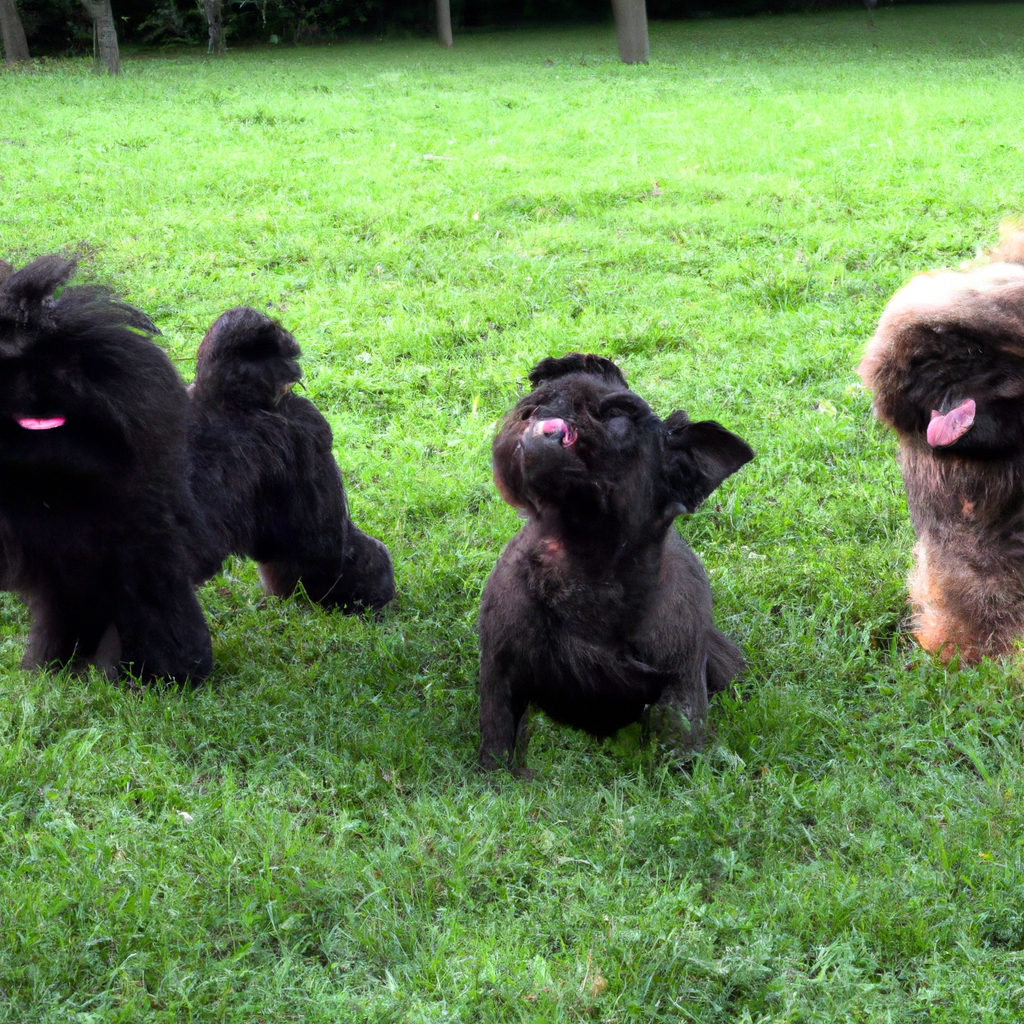
Training a dog, regardless of its breed, is a rewarding experience that strengthens the bond between the pet and its owner. However, it’s important to note that not all breeds are the same when it comes to training. This is particularly true when comparing the Affenpinscher, a small but feisty breed, to other toy breeds such as the Toy Poodle.
The Affenpinscher, also known as the “Monkey Terrier” due to its primate-like appearance and playful nature, is a breed that is known for its stubbornness. This trait can make training a bit of a challenge. Unlike other toy breeds, Affenpinschers are not as eager to please their owners, which can make them seem somewhat aloof during training sessions. They are independent thinkers and often prefer to do things their own way. This doesn’t mean they are untrainable, but it does require a different approach.
On the other hand, the Toy Poodle is a breed that is known for its intelligence and eagerness to please. These traits make them relatively easy to train compared to the Affenpinscher. Toy Poodles are quick learners and are often eager to show off their new skills. They thrive on positive reinforcement and are generally very responsive to their owner’s commands.
However, despite these differences, it’s important to remember that every dog is an individual and there can be variations within each breed. For instance, while Affenpinschers are generally more stubborn, you may come across an individual who is eager to please. Similarly, while Toy Poodles are typically easy to train, you may encounter one who is more independent-minded.
When training an Affenpinscher, patience and consistency are key. They respond well to positive reinforcement, so rewards like treats, praise, and playtime can be effective motivators. However, they can also be sensitive, so harsh corrections or punishment can be counterproductive. Instead, focus on building a strong bond with your Affenpinscher and making training sessions fun and engaging.
In contrast, when training a Toy Poodle, it’s important to keep their intelligence in mind. They can easily become bored with repetitive tasks, so it’s important to keep training sessions varied and interesting. They also respond well to positive reinforcement, but due to their intelligence, they may require more mental stimulation than other breeds.
In conclusion, while there are distinct differences in training an Affenpinscher versus a Toy Poodle, the key to successful training lies in understanding your dog’s individual personality and needs. Regardless of the breed, training should always be a positive and rewarding experience for both you and your dog. Remember, the goal of training is not just to teach your dog commands, but to build a strong and trusting relationship with them. So, whether you’re training an Affenpinscher or a Toy Poodle, always approach it with patience, consistency, and plenty of love.
Affenpinscher and Yorkshire Terrier: A Look into Their Training Differences
Training your new puppy can be an exciting yet challenging task. The process can be even more complex when you’re dealing with different breeds, as each breed has its unique characteristics and temperaments. In this article, we’ll delve into the training differences between two popular toy breeds: the Affenpinscher and the Yorkshire Terrier.
The Affenpinscher, also known as the “Monkey Terrier,” is a small but feisty breed. They are known for their distinctive appearance, with a shaggy coat and a face that resembles a monkey, hence the nickname. Affenpinschers are intelligent, adventurous, and often stubborn, which can make training them a bit of a challenge. However, with the right approach, these little dogs can be trained effectively.
Training an Affenpinscher requires patience and consistency. They respond well to positive reinforcement techniques such as treats, praise, and play. It’s important to keep training sessions short and fun to maintain their interest. Affenpinschers are known to be a bit stubborn, so it’s crucial to establish yourself as the pack leader early on. Despite their stubbornness, they are eager to please their owners and can learn commands and tricks quickly when motivated.
On the other hand, the Yorkshire Terrier, or “Yorkie,” is a small breed with a big personality. They are known for their silky coats and confident demeanor. Yorkies are intelligent, curious, and love to be the center of attention. This breed is generally easier to train than the Affenpinscher, but they also have their unique challenges.
Yorkies are quick learners and can pick up new commands relatively quickly. However, they can be a bit stubborn and independent, which can make training a bit challenging. Like Affenpinschers, Yorkies respond well to positive reinforcement techniques. They love to be praised and rewarded, which can be used to your advantage during training sessions.
One significant difference between training an Affenpinscher and a Yorkie is their socialization needs. Affenpinschers are naturally wary of strangers and can be a bit territorial. Therefore, early socialization is crucial for this breed. They need to be exposed to different people, environments, and situations to become well-rounded dogs.
Yorkies, on the other hand, are naturally sociable and love to be around people. However, they can be a bit yappy and may need training to control their barking. They also have a high prey drive and may need training to resist chasing after small animals.
In conclusion, while both Affenpinschers and Yorkshire Terriers are intelligent and trainable, they each come with their unique challenges. Training an Affenpinscher requires patience and consistency due to their stubborn nature, while Yorkies need training to control their barking and high prey drive. Regardless of the breed, remember that every dog is an individual and may not fit the typical breed characteristics. Therefore, it’s essential to understand your dog’s personality and tailor your training methods accordingly. With patience, consistency, and a lot of love, you can train your Affenpinscher or Yorkshire Terrier to be a well-behaved and happy companion.
How Training an Affenpinscher Differs from a Shih Tzu
Training an Affenpinscher can be a unique experience, especially when compared to other toy breeds like the Shih Tzu. While both breeds are small in size and known for their lively personalities, the training methods and techniques that work best for each can vary significantly.
Affenpinschers, often referred to as “Monkey Terriers” due to their distinctive, primate-like faces, are known for their bold and stubborn nature. This breed is intelligent and curious, with a strong desire to explore their surroundings. However, their independent streak can sometimes make training a bit of a challenge. Unlike other toy breeds, Affenpinschers require a firm and consistent hand during training sessions. They respond best to positive reinforcement techniques, such as treats and praise, rather than harsh corrections or punishment.
In contrast, Shih Tzus are known for their friendly and outgoing nature. They are eager to please their owners and generally have a more compliant temperament. This makes them relatively easier to train compared to Affenpinschers. However, Shih Tzus can also be stubborn at times, and they may require a bit more patience during training sessions.
One of the key differences in training these two breeds lies in their energy levels. Affenpinschers are energetic and active, requiring regular exercise to keep them mentally stimulated and physically fit. This means that training sessions should be dynamic and engaging, incorporating plenty of physical activity. On the other hand, Shih Tzus are more laid-back and less active. They prefer shorter, more focused training sessions, with plenty of breaks in between to prevent them from becoming overwhelmed.
Another significant difference is in their socialization needs. Affenpinschers, with their bold and independent nature, may require more extensive socialization training to ensure they interact well with other dogs and people. They can be territorial and may not take kindly to strangers or unfamiliar dogs. Shih Tzus, however, are naturally sociable and generally get along well with others. While they still benefit from socialization training, it may not need to be as intensive as with an Affenpinscher.
When it comes to house training, both breeds can present their own challenges. Affenpinschers, with their stubborn streak, may take longer to house train. Consistency and patience are key when house training this breed. Shih Tzus, while generally easier to train, can also be stubborn when it comes to house training. They may require a bit more time and patience, but with consistent effort, they can be successfully house trained.
In conclusion, while both Affenpinschers and Shih Tzus are charming and lovable toy breeds, their training needs can differ significantly. Understanding these differences can help owners tailor their training approach to best suit their pet’s unique personality and needs. Whether you’re training an independent and bold Affenpinscher or a friendly and outgoing Shih Tzu, remember that patience, consistency, and positive reinforcement are key to a successful training experience.
Affenpinscher vs Maltese: A Comprehensive Guide on Training Differences
Training your new puppy can be an exciting yet challenging task. The process can be even more complex when you’re dealing with different breeds, as each breed has its unique characteristics and temperaments. In this article, we’ll delve into the training differences between two popular toy breeds: the Affenpinscher and the Maltese.
The Affenpinscher, also known as the “Monkey Terrier,” is a small but feisty breed. They are known for their distinctive appearance, with a shaggy coat and a face that resembles a monkey, hence the nickname. Affenpinschers are intelligent, adventurous, and often stubborn, which can make training them a bit of a challenge. However, with the right approach, they can be trained effectively.
On the other hand, the Maltese is a breed known for its elegance and charm. They are small dogs with long, silky white coats and expressive eyes. Maltese dogs are generally friendly, responsive, and eager to please their owners, making them relatively easier to train compared to Affenpinschers.
When training an Affenpinscher, it’s crucial to remember that they are naturally curious and love to explore. They respond well to training methods that incorporate play and rewards. Affenpinschers can be stubborn at times, so patience is key. Consistency is also important; they need to understand that the rules don’t change. Despite their stubbornness, Affenpinschers are very loyal and protective of their owners, so once you’ve established a strong bond with them, they will be more inclined to follow your commands.
In contrast, training a Maltese requires a gentle approach. They are sensitive dogs and do not respond well to harsh training methods. Positive reinforcement, such as treats and praises, works best with this breed. Maltese dogs are also very sociable, so socialization should be a part of their training from an early age. They are quick learners and eager to please, so with consistent training, they can learn a variety of commands and tricks.
Despite these differences, there are also similarities in training these two breeds. Both Affenpinschers and Maltese dogs require early socialization. Exposing them to different environments, people, and other animals at a young age can help them grow into well-rounded dogs. Both breeds also require mental stimulation. They are intelligent dogs and can get bored easily, so incorporating puzzle toys and brain games into their routine can keep them engaged and happy.
In conclusion, while there are distinct differences in training an Affenpinscher and a Maltese, the key to successful training lies in understanding the unique characteristics of each breed. Affenpinschers require a firm yet playful approach, while Maltese dogs respond best to gentle, positive reinforcement methods. Regardless of the breed, remember that patience, consistency, and love are essential in training your furry friend. After all, the goal is not just to have a well-trained dog, but also to build a strong, loving bond with your pet.
The Unique Training Needs: Comparing Affenpinscher and Pekingese
Training your new puppy can be an exciting yet challenging endeavor. The process can be even more complex when you’re dealing with toy breeds, which are known for their small size and distinctive personalities. Two such breeds are the Affenpinscher and the Pekingese. While they may share a category, their training needs are quite different, reflecting their unique temperaments and characteristics.
The Affenpinscher, often referred to as the “Monkey Terrier” due to its primate-like face, is a small but sturdy breed. Known for their playful and adventurous nature, these dogs are full of energy and curiosity. Training an Affenpinscher requires a good deal of patience and consistency. They are intelligent and quick to learn, but their independent streak can sometimes make them a bit stubborn. Positive reinforcement techniques work best with this breed, as they respond well to rewards and praise.
Affenpinschers are also known for their protective instincts. While this can make them excellent watchdogs, it can also lead to issues with territoriality and aggression if not properly managed. Early socialization is crucial for this breed, as it helps them learn to be comfortable around different people and environments. Training should also focus on teaching them to control their protective instincts, ensuring they understand when it’s appropriate to be protective and when it’s not.
On the other hand, the Pekingese, with its regal bearing and lion-like mane, is a breed that was once revered by Chinese royalty. These dogs are known for their calm and dignified demeanor, which can sometimes come across as aloofness. Training a Pekingese requires an understanding of their unique temperament. They are intelligent and can be quite stubborn, so a firm but gentle approach is often most effective.
Unlike the Affenpinscher, the Pekingese is not naturally inclined towards physical activity. They are more comfortable lounging around the house than going on long walks or playing fetch. This means that training should focus more on mental stimulation rather than physical exercise. Puzzle toys and problem-solving games can be great tools for keeping a Pekingese engaged and mentally stimulated.
Pekingese dogs also have a strong sense of self-importance, which can sometimes lead to issues with dominance. It’s important to establish yourself as the leader early on in the training process. However, this should be done in a respectful and positive manner, as Pekingese dogs do not respond well to harsh training methods.
In conclusion, while both the Affenpinscher and the Pekingese fall under the toy breed category, their training needs are quite different. The Affenpinscher, with its energetic and protective nature, requires consistent training and early socialization. The Pekingese, on the other hand, requires mental stimulation and a respectful approach to training. Understanding these differences can help you tailor your training methods to your dog’s specific needs, ensuring a successful and rewarding training experience for both of you.The Affenpinscher, compared to other toy breeds, may require more consistent and patient training due to its stubborn and independent nature. While other toy breeds might be more eager to please and thus easier to train, the Affenpinscher’s unique personality traits can make training a bit more challenging. However, with the right approach, they can be just as trainable as any other toy breed.
